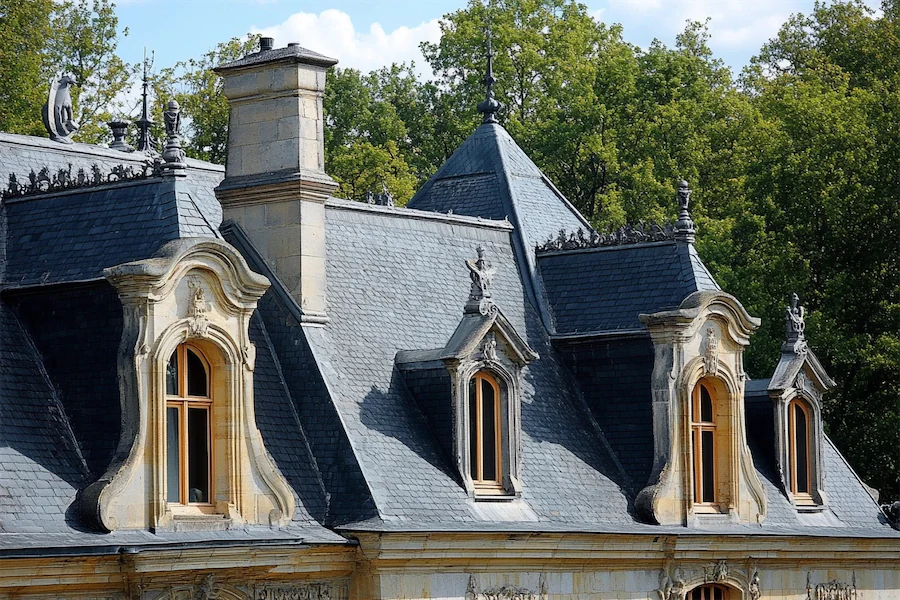French châteaux are renowned for their majestic and intricate roof designs, which not only enhance their aesthetic appeal but also reflect the architectural evolution of France.
History and Origins of French Château Roofs
The roofing styles of French châteaux have evolved over centuries, influenced by various architectural movements and practical considerations. Initially, medieval castles featured steeply pitched roofs designed to shed rain and snow efficiently. As architectural tastes shifted towards grandeur and ornamentation, more elaborate roofing styles emerged.
Key Features of French Château Roofs
French château roofs are characterized by several distinctive features:
- Mansard Roofs: Popularized in the 17th century by architect François Mansart, the mansard roof features a dual-pitched design with a nearly vertical lower slope and a gentler upper slope. This configuration maximizes usable attic space and allows for the addition of dormer windows, contributing to the château’s imposing silhouette.
- Steeply Pitched Roofs: Many châteaux exhibit steeply pitched roofs, often hipped, which not only facilitate water runoff but also add to the vertical grandeur of the structure. These roofs are typically covered with slate tiles, known for their durability and elegant appearance.
- Dormer Windows: Incorporated into the roof’s design, dormer windows provide natural light and ventilation to the upper floors or attic spaces. They also serve as decorative elements, often adorned with intricate moldings and pediments.
- Conical Towers and Turrets: Many châteaux feature towers or turrets capped with conical roofs, adding to the fairy-tale aesthetic and providing strategic vantage points in historical fortifications.
Applications of French Château Roofs
The distinctive roofing styles of French châteaux have been adapted in various architectural contexts:
- Residential Architecture: The châteauesque style, inspired by French châteaux, became popular in the United States during the late 19th and early 20th centuries. This style features elements such as steeply pitched roofs, towers, and ornate detailing, emulating the grandeur of French noble residences.
- Public and Institutional Buildings: Certain public buildings have adopted château-inspired roofing to convey elegance and authority, incorporating mansard roofs and decorative dormers into their designs.
Considerations When Choosing French Château Roofs
When designing or restoring a roof in the French château style, several factors should be considered:
- Material Selection: Authentic materials, such as slate tiles, contribute to the roof’s longevity and historical accuracy. However, modern alternatives may offer cost-effective solutions while mimicking the traditional appearance.
- Structural Engineering: The complex roof structures, including steep pitches and additional elements like dormers and turrets, require precise engineering to ensure stability and durability.
- Aesthetic Consistency: Attention to architectural details, such as ornamental cresting and finials, is essential to maintain the cohesive and opulent appearance characteristic of French château roofs.
Conclusion
French château roofs epitomize architectural elegance and sophistication, combining functional design with elaborate ornamentation. Their enduring appeal continues to inspire architects and builders, preserving the legacy of France’s rich architectural heritage.
